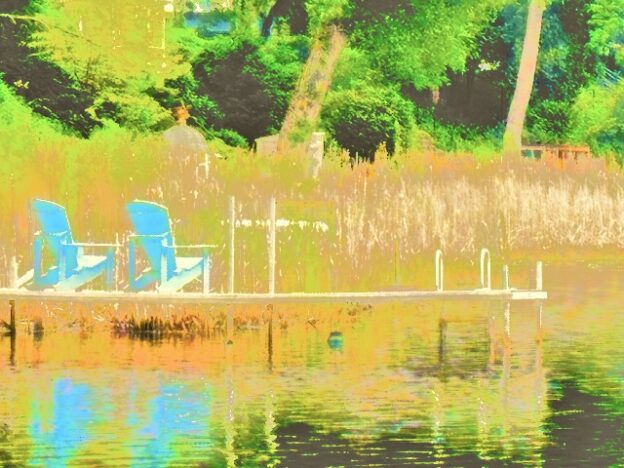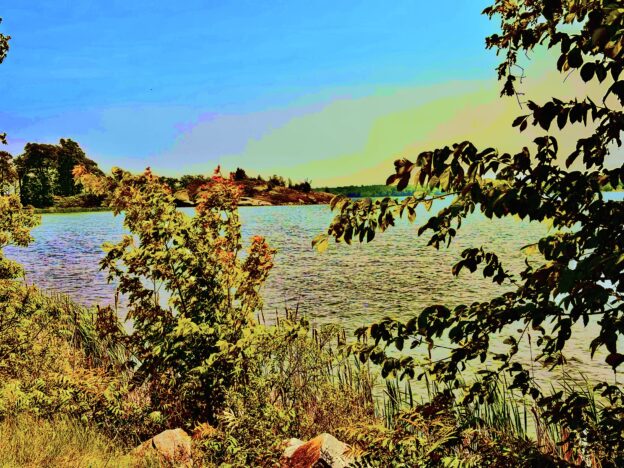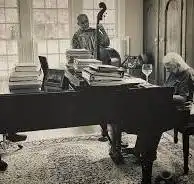After dinner this evening, still recovering from Fairbairn’s maple syrup enhancing the fruit for dessert, and while sitting languidly on the balcony overlooking the glassy river and the young corn shoots in the field, I saw a woman in the distance. She was running along the gravel road. Her determined effort was, I thought, exemplary. But as positive and engaging as was her enterprise, it little compared with the excitement and elevation I derived from having just hours before consumed the content of a thoroughly unanticipated email from an old boarding school acquaintance. I hadn’t until then read a more exacting detail of prep school upbringing than that of Holden Caulfield.
Holden Caulfield (identified as “Holden Morrisey Caulfield” in the story “Slight Rebellion Off Madison”, and “Holden V. Caulfield” in The Catcher in the Rye) is a fictional character in the works of author J. D. Salinger. He is most famous for his appearance as the antihero protagonist and narrator of the 1951 novel The Catcher in the Rye. Since the book’s publication, Holden has become an icon for teenage rebellion and angst, and is considered among the most important characters of 20th-century American literature. The name Holden Caulfield was initially used in an unpublished short story written in 1941 and first appeared in print in 1945.
The email was from Bobbie Ball, the chap who distinguished himself in our final year – and while writing our graduate exams – as the “Mad Bomber” . Each night – probably after midnight – he would sneak into the room of one or other of the Upper Six class and smack them in their sleep with a water bomb (I’m guessing an otherwise innocuous balloon filled with water). Thankfully he never succeeded to trash me – though I believe he may have tried but was somehow thwarted in his attempt.
It is only recently – and by casual circumstances – that I have reconnected with Bobbie. His email – for which I have his approval to repeat – is in my opinion a model of sublimity. His unassuming countenance is unique. And I have subsequently learned why; viz., if you’ve got it, you don’t talk about it. And he’s got it! In spades!
Like so many insightful pieces, the probity lies between the lines, the sphere of the unspoken but intimated. Considering the acuity of what he has said, I am not convinced even Bobby fully grasps its depth. The latent turmoil of the precocious mind is not to be understated.
June 11, 2025
Somewhere in northeastern or central Ontario.
Hi Billy.. so I have been reading your very interesting and evocative Substack daily for about a month now. It is a wonderful thing to hear your voice describing your world in a passion that is as unfamiliar to me but as colorful and striking as your stylized photos.
Since 1969, a lifetime ago literally, you had disappeared from my radar as I had from yours. I am enjoying having the intervening years unveiled by your writings. I knew you lived somewhere near Ottawa but that was it. So the Bill Chapman I knew for less than a decade has come to life for me. It seems like a good opportunity to flesh out my journey from then til now.
Part one… I was born in Durham Ontario a town of population 2,500. My dad was a small town pharmacist and the mayor. My mother was a victim of bad luck. She developed rheumatoid arthritis early in her thirties and suffered the gossip of a small town when the mayor ran off to Toronto with a twenty year old who worked in his store. She died in the spring of 1960 with my sister and I alone in the house.
Five months later my father remarried and I was somehow off to St. Andrew’s.
I spent the first months at the school so lonely I cried my eyes out on the front steps of MacDonald House daily. The teachers moved me to the back of the class because I posed no threat to their rule. My new step mother convinced me to join the treble choir so yes I was lucky the bullies didn’t target me.
But… when I went home to Don Mills for Thanksgiving my new step mother was gone and my dad said I could leave SAC at Christmas if I was still sad. Well that never happened. By Christmas I had the place figured out. I loved it. As for the bullies they steered clear after watching the wild man on the sports fields. By the time you arrived in grade ten I was comfortable.
In the summers I worked as a caddy and club cleaner at the Donalda Club. Morning til night they kept me busy seven days a week. In the summers I worked in a veneer factory and in grade twelve summer cleared a 12 acre swamp for a sewer company in Markdale.
St Andrew’s raised me. There was no love but it became clear to me life is a game and if you can figure out the rules you can survive. In later years I described it as a round table top. You can play safe and stay in the middle or you can venture out to the perimeter edges. Lean over, test your balance put one foot in the dark side but don’t be stupid and fall off the edge. It is almost impossible to get back up.
I started as a new boy at SAC but through tenacity and guile wound up as a prefect. The place worked for me. It doesn’t for everyone. My son included.
Then it was off to York. I lived at Glendon first year and commuted to the main campus. There were a few of us (at Glendon Hall). You, Reed Osborn, Dave Love, Murray Shields (deceased last December), plus Gord Lownds, Martha Davis, Bill Rutledge , Jamie Sifton and others (Bill Mulock, Michael Perley).
Second year I went to the main campus and took a break from the St Andrews mode. A radio station was starting and Jaimie Crookston recommended I join. So the rock and roll king came to life. Along with Chuck Azzarello, later with CHUM fm and then a long career building CFRA radio in Ottawa as program director, we spun the discs.
My first ever girlfriend dropped me and I graduated with a degree in political science.
While working as a hustler on the midway at the CNE that year Jamie Sifton of the broadcasting family recruited me to join him at CFJR radio in Brockville . Six to midnight and weekends. I was on the Air at the sound of the seaway. I was fired after ten months for being too out spoken.
To be continued…🙉🙈🙊
Photo courtesy of: just stephen















